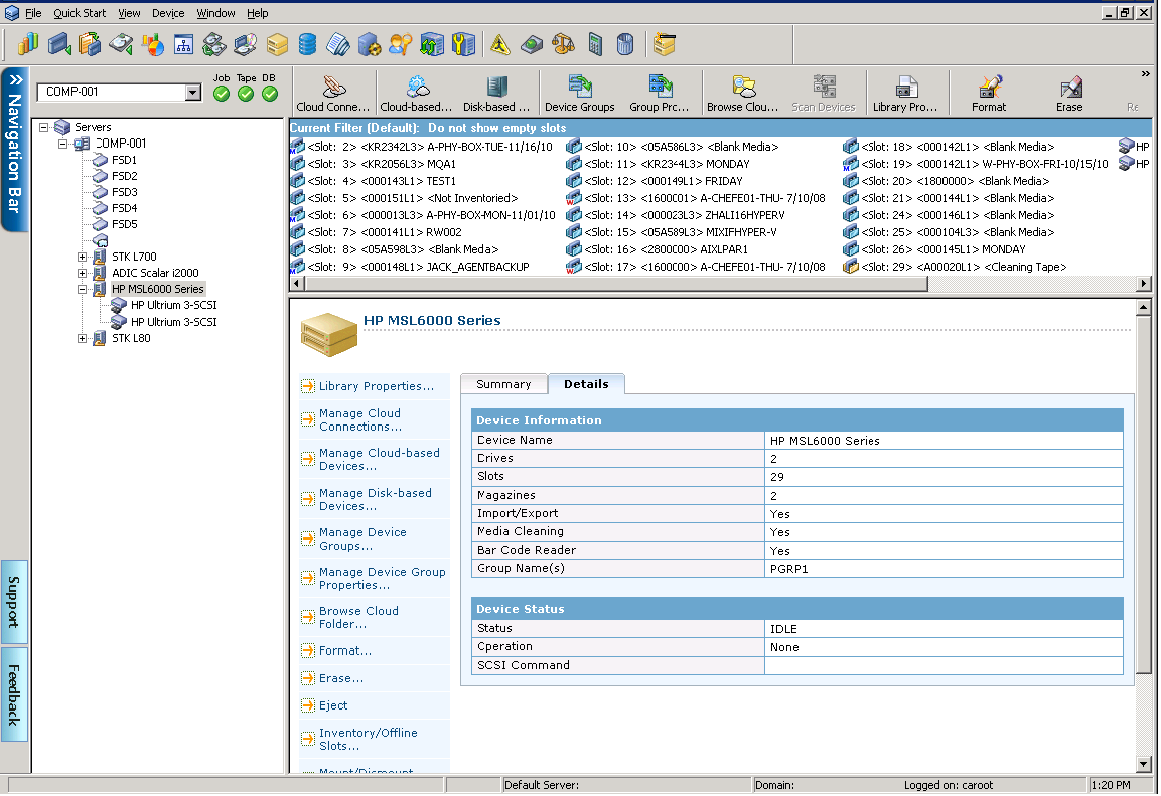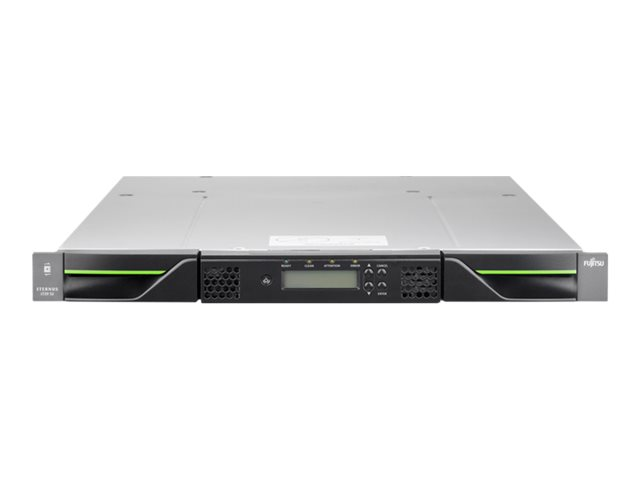Tape Library Slots
The mailslot is a single slot at the front of the left magazine that you can access without removing the whole magazine. Loading a tape through the mailslot is faster than opening the magazine because the device does not need to inventory the rest of the magazine slots when you use the mailslot. While Scalar i3 is designed as an easy-to-manage, cost-effective, entry-level tape library, it has the flexibility to grow as storage needs change. Scalar i3 can scale cartridge slots from 25 up to 400, in 25-slot increments with Capacity-on-Demand (CoD) software licensing, increasing compressed LTO-8 capacity from 750 TB up to 12 PB. The Start-DPMLibraryInventory cmdlet starts an inventory of the tapes in a System Center 2019 - Data Protection Manager (DPM) library. DPM detects any tape, with or without a bar code, in a library. You can choose either a detailed inventory or a fast inventory. For a detailed inventory, DPM reads the header area of the tapes in a library to identify the on-media identifier (OMID) on each tape. In computer storage, a tape library, sometimes called a tape silo, tape robot or tape jukebox, is a storage device that contains one or more tape drives, a number of slots to hold tape cartridges, a barcode reader to identify tape cartridges and an automated method for loading tapes (a robot).
8177-LTO: StorageLibrary T40+ LTO-6 HH SAS, 24 slots: StorageLibrary T40+, LTO-6 SAS, 60TB/150TB, 4U, 24-slots, 1x LTO-6 HH SAS tape drive, Symantec Backup Exec QS (single server edition), redundant power supply, rackmount kit, barcode reader, barcode labels (60pcs), ethernet cable, international power cords, quick installation guide and warranty card.
In computer storage, a tape library, sometimes called a tape silo, tape robot or tape jukebox, is a storage device that contains one or more tape drives, a number of slots to hold tapecartridges, a barcode reader to identify tape cartridges and an automated method for loading tapes (a robot). Additionally, the area where tapes that are NOT currently in a silo are stored is also called a tape library. Tape libraries can contain millions of tapes.
One of the earliest examples was the IBM 3850 Mass Storage System (MSS), announced in 1974.
Design[edit]


These devices can store immense amounts of data, ranging from 20 terabytes[1] up to 2.1 exabytes of data[2] as of 2016. Such capacity is multiple thousand times that of a typical hard drive and well in excess of what is capable with network attached storage. Typical entry-level solutions cost around $10,000 USD,[3] while high-end solutions can start at as much as $200,000 USD[4] and cost well in excess of $1 million for a fully expanded and configured library.

For large.
Dell Tape Library 24 Slots
tape autoloader...[Storage System] A tape device that provides automated access to multiple tape cartridges, typically via a single tape drive.
What is a stacker (autoloader) vs a jukebox?

media stacker...[Data Recovery] A robotic media handler in which media must be moved sequentially by the robot.